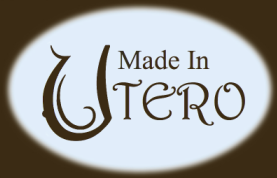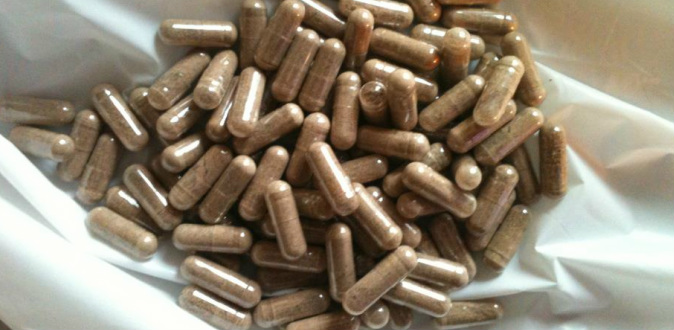Placenta Encapsulation
Placenta encapsulation is not a new idea. It has been a part of Chinese Medicine for centuries. It is has been gaining popularity in the United States in recent years, with more and more women choosing to use their placenta to improve their health postpartum. Studies show that placentas contain many vital nutrients including iron, protein, vitamin B6, and hormones. Following birth, mothers can be lacking and/or be unbalanced in these nutrients. It can take a while for the mother’s body to return to balance. During this time is when the “baby blues” come about. It has been reported that over 80% of mothers suffer from some form of postpartum depression. It is hard for a mother to know if she will suffer from postpartum depression until she has it. A common treatment for this depression is anti-depressants. Unfortunately, these drugs can pass through the breast milk to the baby. Often, mothers feel they are only left with two choices, stop breastfeeding or suffer through the depression. However, the placenta may offer a natural way to combat postpartum depression with little to no side effects. In addition to postpartum depression, women have reported that ingesting placenta has helped with:
- Increasing milk supply
- Stopping or slowing hemorrhaging
- Speeding healing time
- Increasing energy
- Returning the uterus to pre-pregnancy size
- PMS or Menopause symptoms in the future
- Shortening postpartum bleeding
- Increasing iron levels that can be low after birth
- Insomnia or sleep problems
The TCM (Traditional Chinese Medicine) Method is used to prepare the placenta. The TCM way is done by steaming the placenta with lemon and ginger, dehydrating, grinding into powder form, and then encapsulating with V caps. Raw encapsulation is available upon request. Raw encapsulation is done by dehydrating on a very low temperature, grinding into powder form, and then encapsulating with V caps. A mother can choose to do half TCM Method and half Raw Method for an additional price of $25. Tinctures are also made with Vodka and are available after 6 weeks, just about the time capsules are running low. Materials are used that are dedicated only to placenta preparation, and can be thoroughly disinfected or disposed of. Cleanliness and disinfection is done according to OSHA BBP standards. The placenta is processed with gloves, goggles, mask, and apron on at all times.
If a mother wants her placenta encapsulated, the placenta needs to be put on ice or refrigerated as soon as possible after birth, within at least 2-3 hours. In general, the sooner the encapsulation is done, the better. If the placenta cannot be encapsulated within 2-3 days, it needs to be double bagged in freezer bags and placed into freezer.
It is wise to keep the placenta after birth and freeze it, even if the mother is sure she doesn’t want it. She may quickly change her mind if she finds herself suffering. In the event she did not keep the placenta, she has lost it as an option. If she has kept the placenta, she can use it, or toss it if she determines she does not need it. It is best to have many options available, since it is not possible to predict what will happen after birth.
- Increasing milk supply
- Stopping or slowing hemorrhaging
- Speeding healing time
- Increasing energy
- Returning the uterus to pre-pregnancy size
- PMS or Menopause symptoms in the future
- Shortening postpartum bleeding
- Increasing iron levels that can be low after birth
- Insomnia or sleep problems
The TCM (Traditional Chinese Medicine) Method is used to prepare the placenta. The TCM way is done by steaming the placenta with lemon and ginger, dehydrating, grinding into powder form, and then encapsulating with V caps. Raw encapsulation is available upon request. Raw encapsulation is done by dehydrating on a very low temperature, grinding into powder form, and then encapsulating with V caps. A mother can choose to do half TCM Method and half Raw Method for an additional price of $25. Tinctures are also made with Vodka and are available after 6 weeks, just about the time capsules are running low. Materials are used that are dedicated only to placenta preparation, and can be thoroughly disinfected or disposed of. Cleanliness and disinfection is done according to OSHA BBP standards. The placenta is processed with gloves, goggles, mask, and apron on at all times.
If a mother wants her placenta encapsulated, the placenta needs to be put on ice or refrigerated as soon as possible after birth, within at least 2-3 hours. In general, the sooner the encapsulation is done, the better. If the placenta cannot be encapsulated within 2-3 days, it needs to be double bagged in freezer bags and placed into freezer.
It is wise to keep the placenta after birth and freeze it, even if the mother is sure she doesn’t want it. She may quickly change her mind if she finds herself suffering. In the event she did not keep the placenta, she has lost it as an option. If she has kept the placenta, she can use it, or toss it if she determines she does not need it. It is best to have many options available, since it is not possible to predict what will happen after birth.
This information has not been evaluated by the FDA. This product is not intended to diagnose, treat, cure, or prevent any disease.
Placenta Keepsakes

Placenta prints are also available whether you choose to encapsulate or not. It’s done by positioning the placenta and cord in the desired shape, and then a piece of thick art paper is pressed against it. This then captures the “tree of life” image.
The umbilical cord can also be preserved. The cord is positioned into the desired shape, usually a heart, spiral, or ring. It is then dehydrated and preserved indefinitely.
The umbilical cord can also be preserved. The cord is positioned into the desired shape, usually a heart, spiral, or ring. It is then dehydrated and preserved indefinitely.



